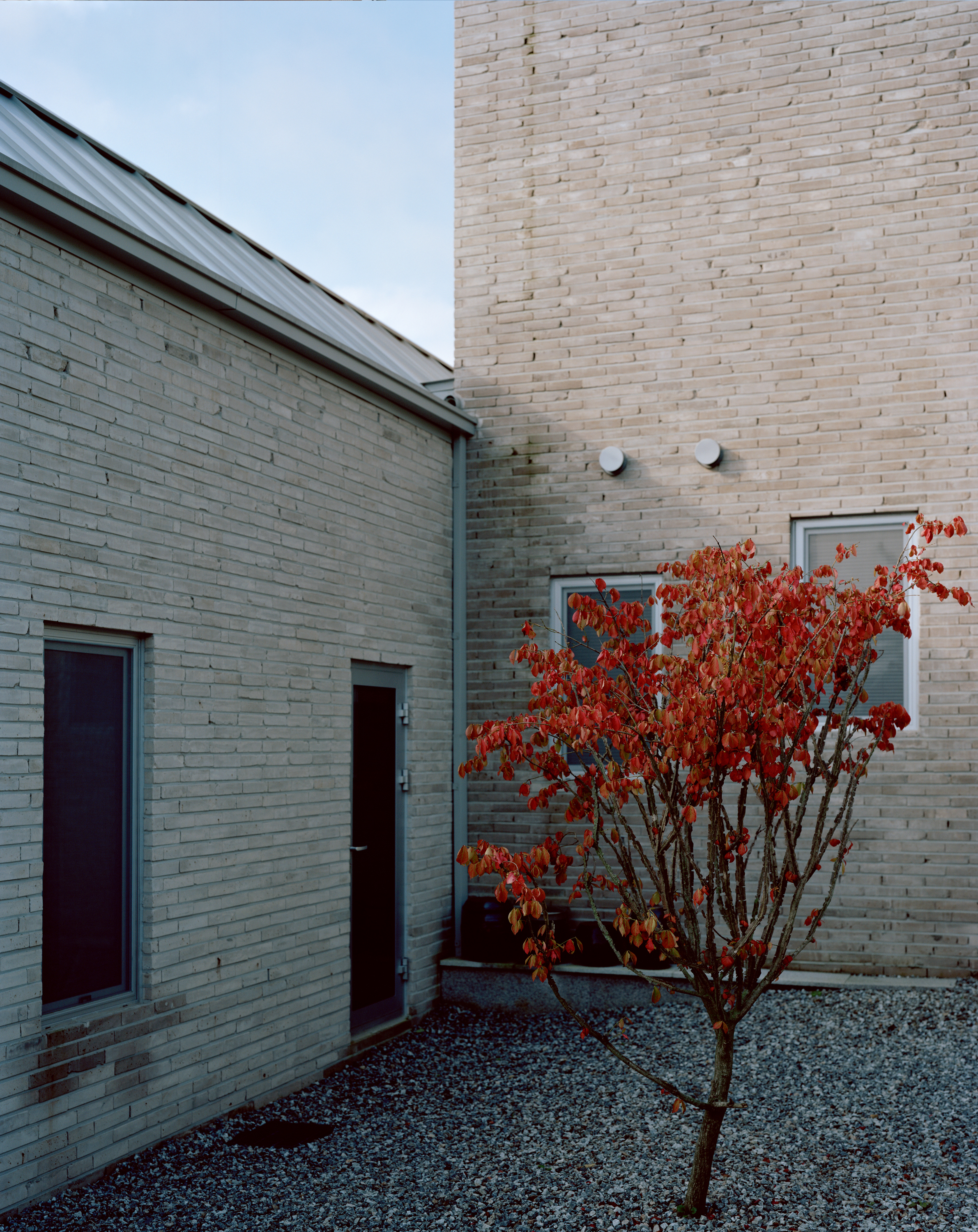House Jipyeong

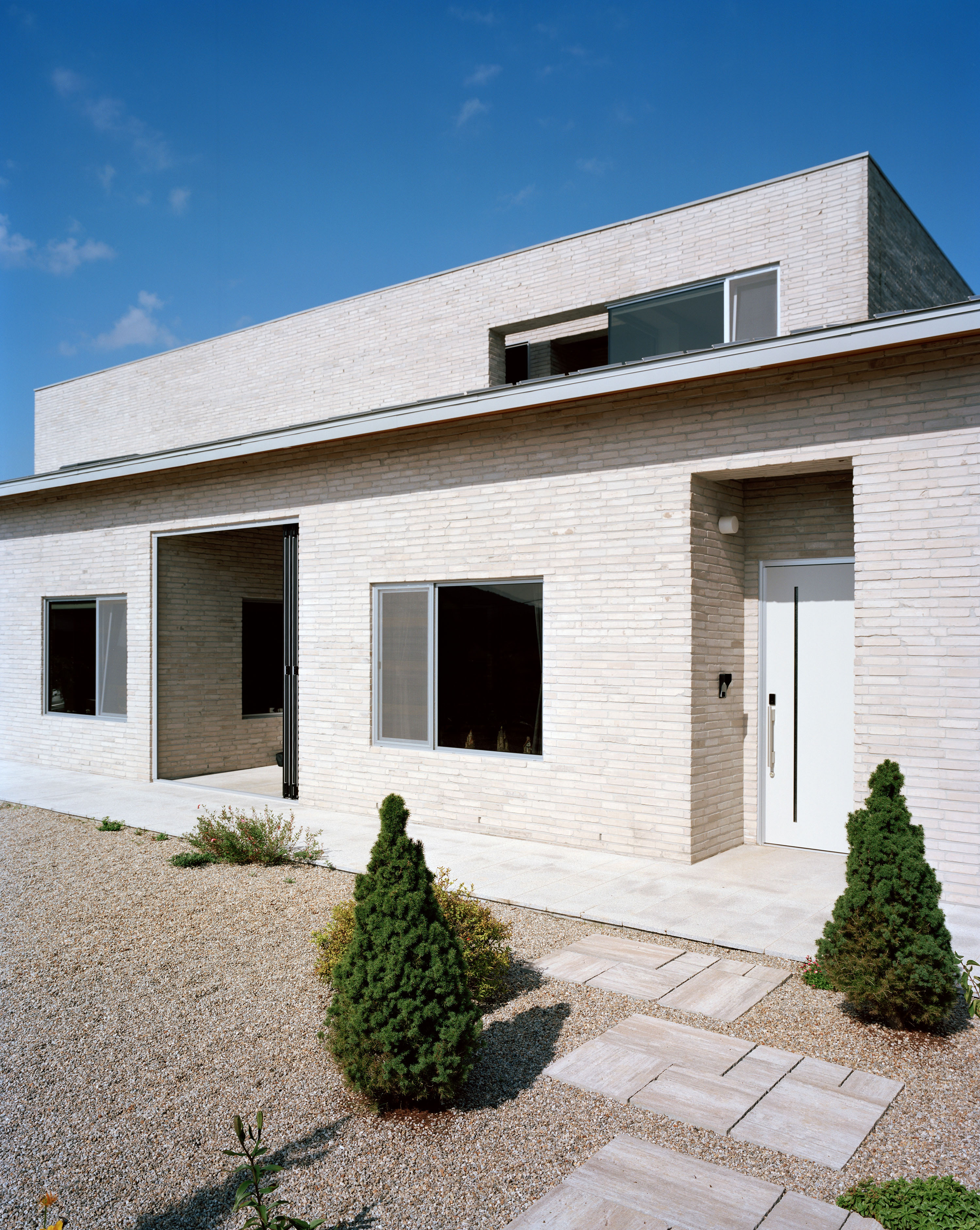
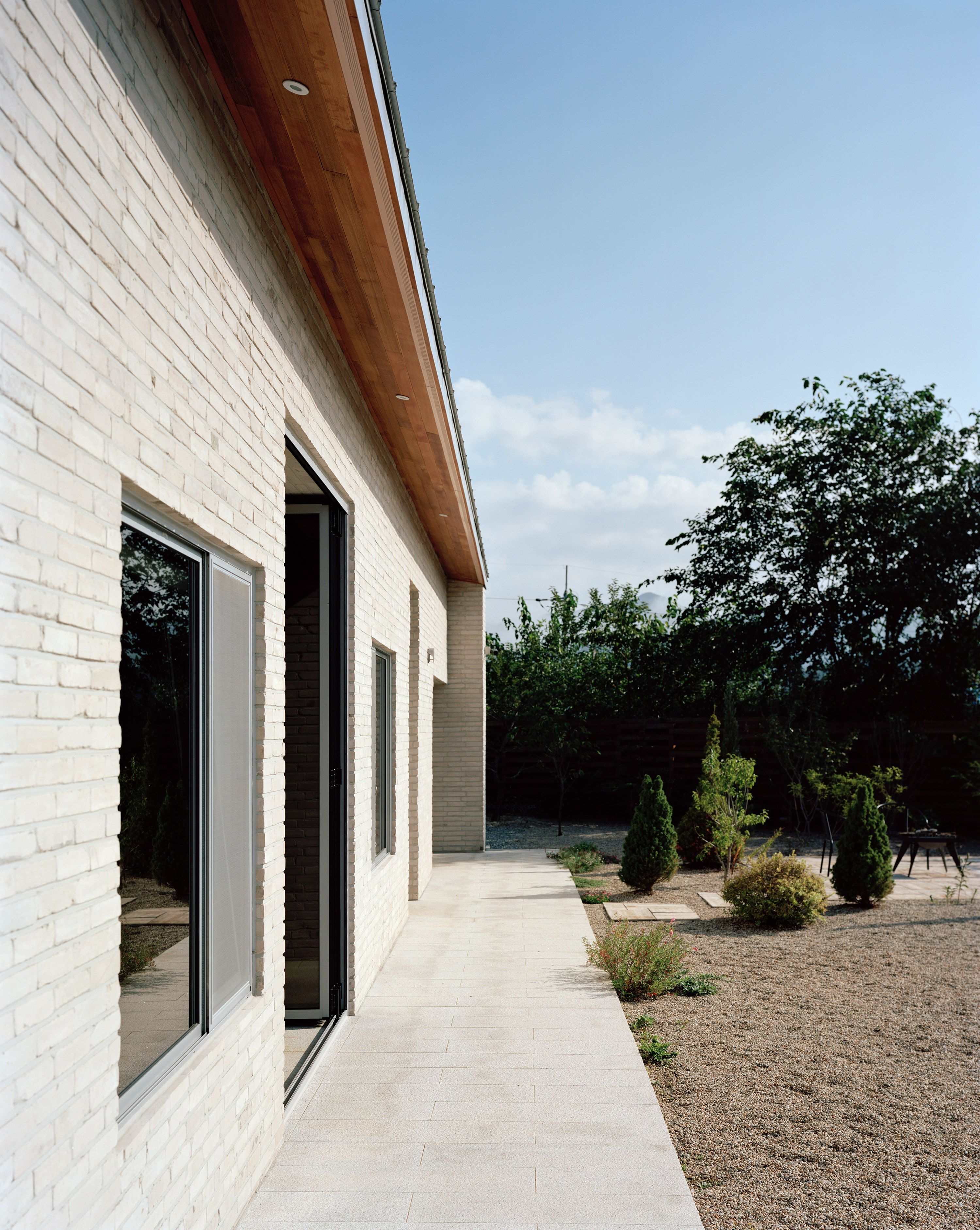
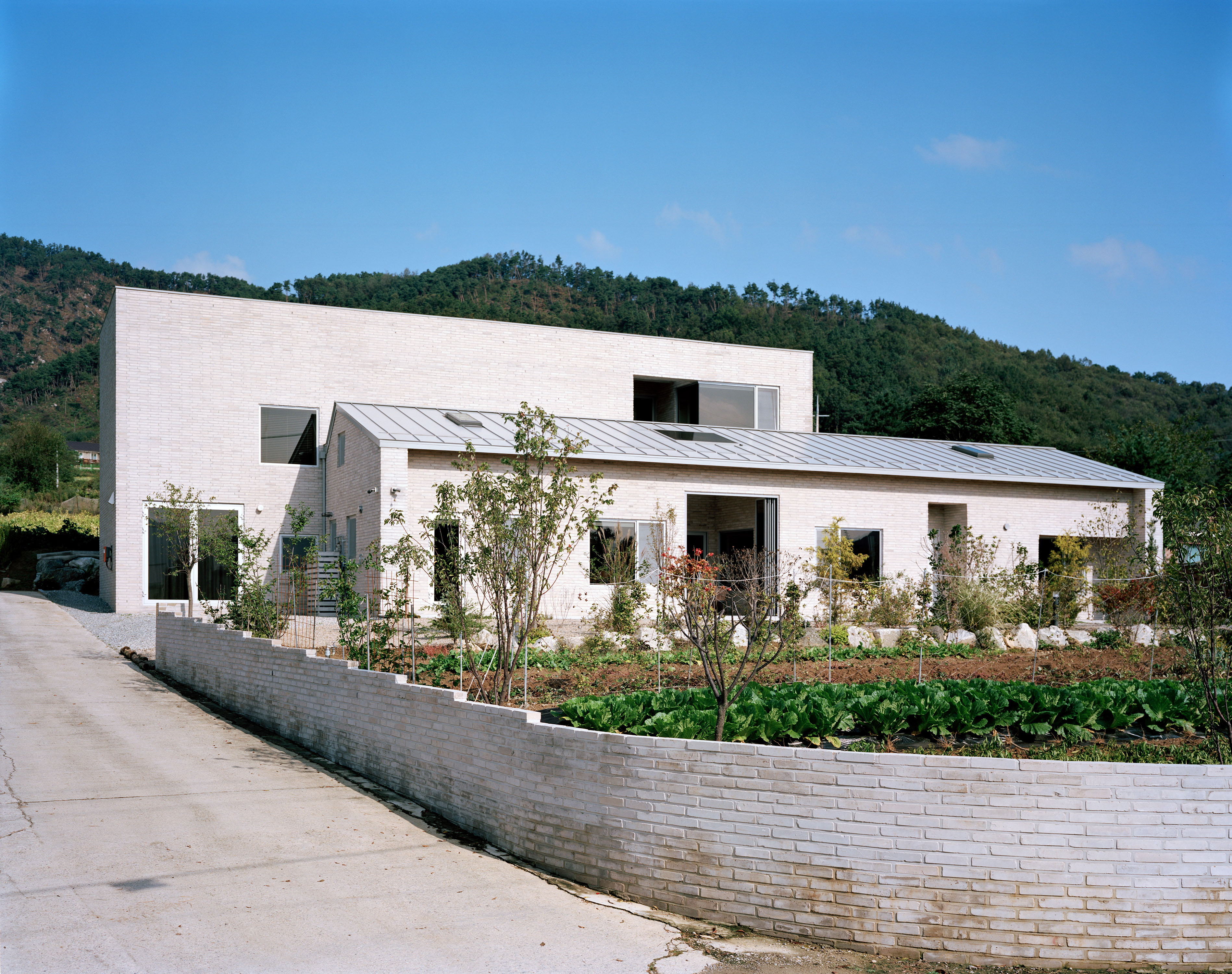


백화원 百畫園
(2019, 지평면, 양평, 한국)
용도: 단독주택
규모: 249 m2
설계팀: 백인화, 백명화
사진: 단이수
마을 어귀에 시냇물이 흐르고, 마을 뒤로는 산이 보인다. 시골에서 흔하게 볼 수 있는 색색의 박공지붕의 단층 집들이 옹기종기 모여있다. 구불구불 굽은 골목길을 따라 올라가면 산과 밭을 배경으로, 마을을 내려다 보는 위치에 백화원이 있다. 백화원은 그림을 그리는 작가를 위한 작업 공간과 부모님과 함께 사는 생활 공간이 어우러진 단독주택이다. 작가에게는 다양한 크기의 그림을 그릴 수 있는 작업실이 필요했다. 그리고 가족들은 다함께 한옥에서 살았던 기억을 떠올리며, 그때처럼 자연 가까이 살고자 했다. 설계가 시작될 무렵 남쪽 도로 가까이 주택 여러 채가 들어서는 중이었다. 대지의 남쪽에는 나무를 심고, 텃밭을 가꿀 수 있는 정원을 만들고, 그 뒤로 집을 배치해 다른 사람의 집이 아닌 정원을 바라볼 수 있도록 했다.
(2019, 지평면, 양평, 한국)
용도: 단독주택
규모: 249 m2
설계팀: 백인화, 백명화
사진: 단이수
마을 어귀에 시냇물이 흐르고, 마을 뒤로는 산이 보인다. 시골에서 흔하게 볼 수 있는 색색의 박공지붕의 단층 집들이 옹기종기 모여있다. 구불구불 굽은 골목길을 따라 올라가면 산과 밭을 배경으로, 마을을 내려다 보는 위치에 백화원이 있다. 백화원은 그림을 그리는 작가를 위한 작업 공간과 부모님과 함께 사는 생활 공간이 어우러진 단독주택이다. 작가에게는 다양한 크기의 그림을 그릴 수 있는 작업실이 필요했다. 그리고 가족들은 다함께 한옥에서 살았던 기억을 떠올리며, 그때처럼 자연 가까이 살고자 했다. 설계가 시작될 무렵 남쪽 도로 가까이 주택 여러 채가 들어서는 중이었다. 대지의 남쪽에는 나무를 심고, 텃밭을 가꿀 수 있는 정원을 만들고, 그 뒤로 집을 배치해 다른 사람의 집이 아닌 정원을 바라볼 수 있도록 했다.
House Jipyeong
(2019, Jipyeong-myeon, Yangpyeong, KR)
Program: House
Area: 249 m2
Project team: Inwha Paik, Myounwha Paik
Photography: Denis Kolesnikov
A stream flows swiftly along the front of the village and a mountain stands in the background. Colorful gabled-roof houses are gathered around, which is commonly seen in rural areas. By walking up along the winding street, ‘House Jipyeong’ is situated on a land that overlooks the neighborhood with a scenery of mountains and fields. The house is designed as an atelier for a painter and a living space for her family.
The main reason the artist needed a house was to have her own atelier where she could work on paintings of various sizes. Also the family wanted to have a life near to nature that would remind them of life in a Hanok - a traditional Korean house where they had once lived. At the beginning of the design phase, several houses were under construction just across the road to the south. It was necessary to place the house to the back of the site so that it could look into its own garden to the south instead of someone else’s house, where they could then grow flowers, trees and vegetables.
(2019, Jipyeong-myeon, Yangpyeong, KR)
Program: House
Area: 249 m2
Project team: Inwha Paik, Myounwha Paik
Photography: Denis Kolesnikov
A stream flows swiftly along the front of the village and a mountain stands in the background. Colorful gabled-roof houses are gathered around, which is commonly seen in rural areas. By walking up along the winding street, ‘House Jipyeong’ is situated on a land that overlooks the neighborhood with a scenery of mountains and fields. The house is designed as an atelier for a painter and a living space for her family.
The main reason the artist needed a house was to have her own atelier where she could work on paintings of various sizes. Also the family wanted to have a life near to nature that would remind them of life in a Hanok - a traditional Korean house where they had once lived. At the beginning of the design phase, several houses were under construction just across the road to the south. It was necessary to place the house to the back of the site so that it could look into its own garden to the south instead of someone else’s house, where they could then grow flowers, trees and vegetables.
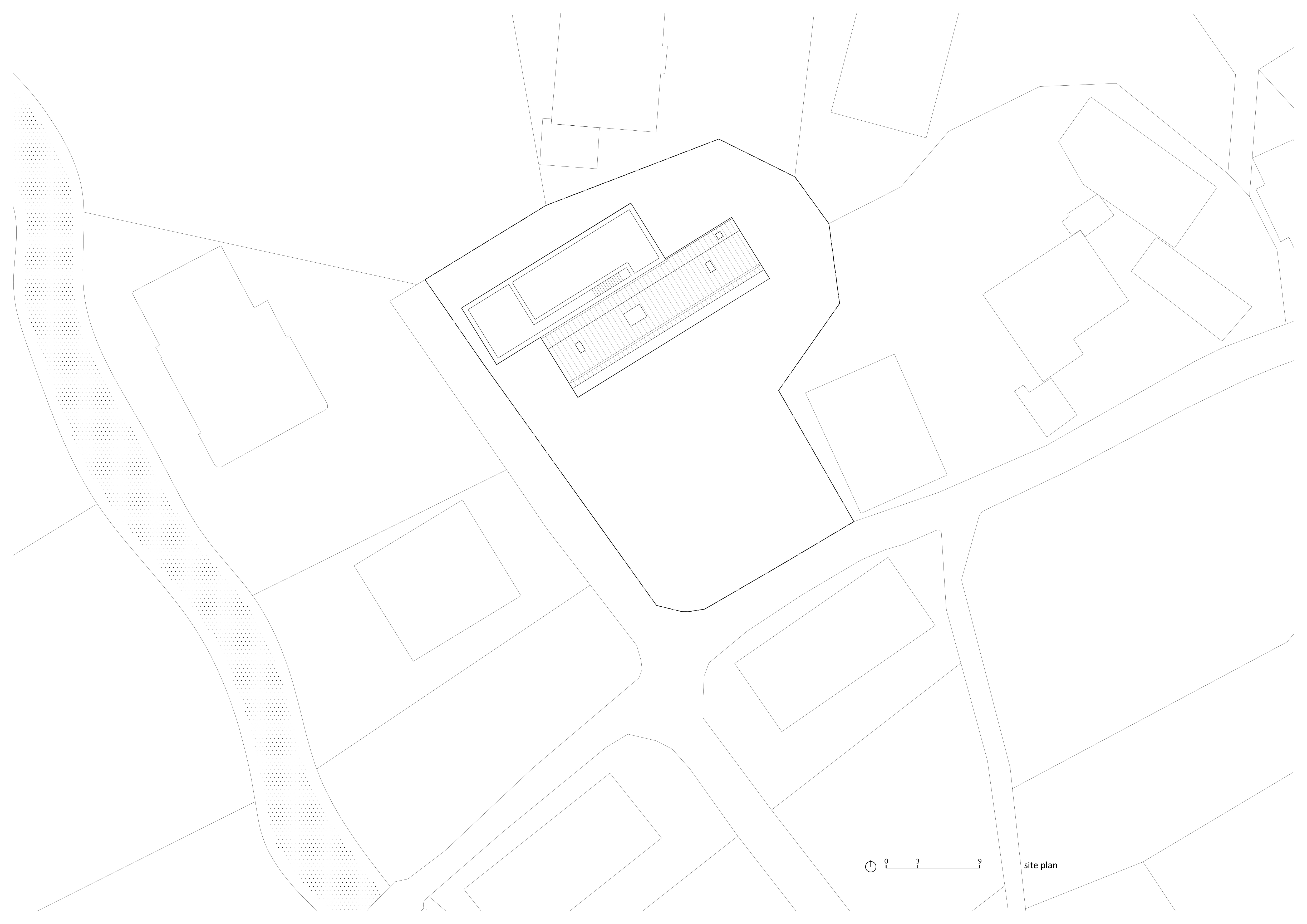

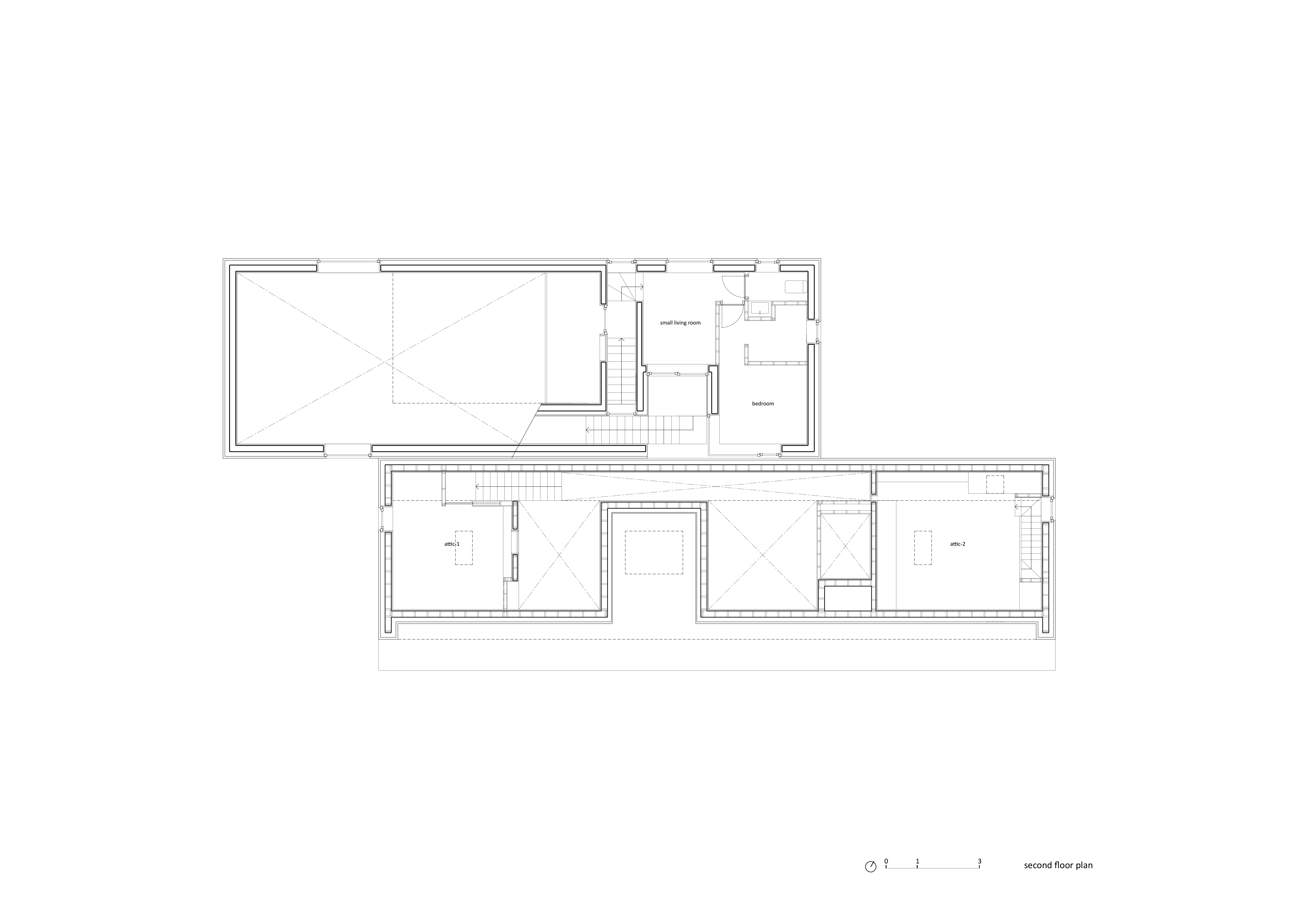
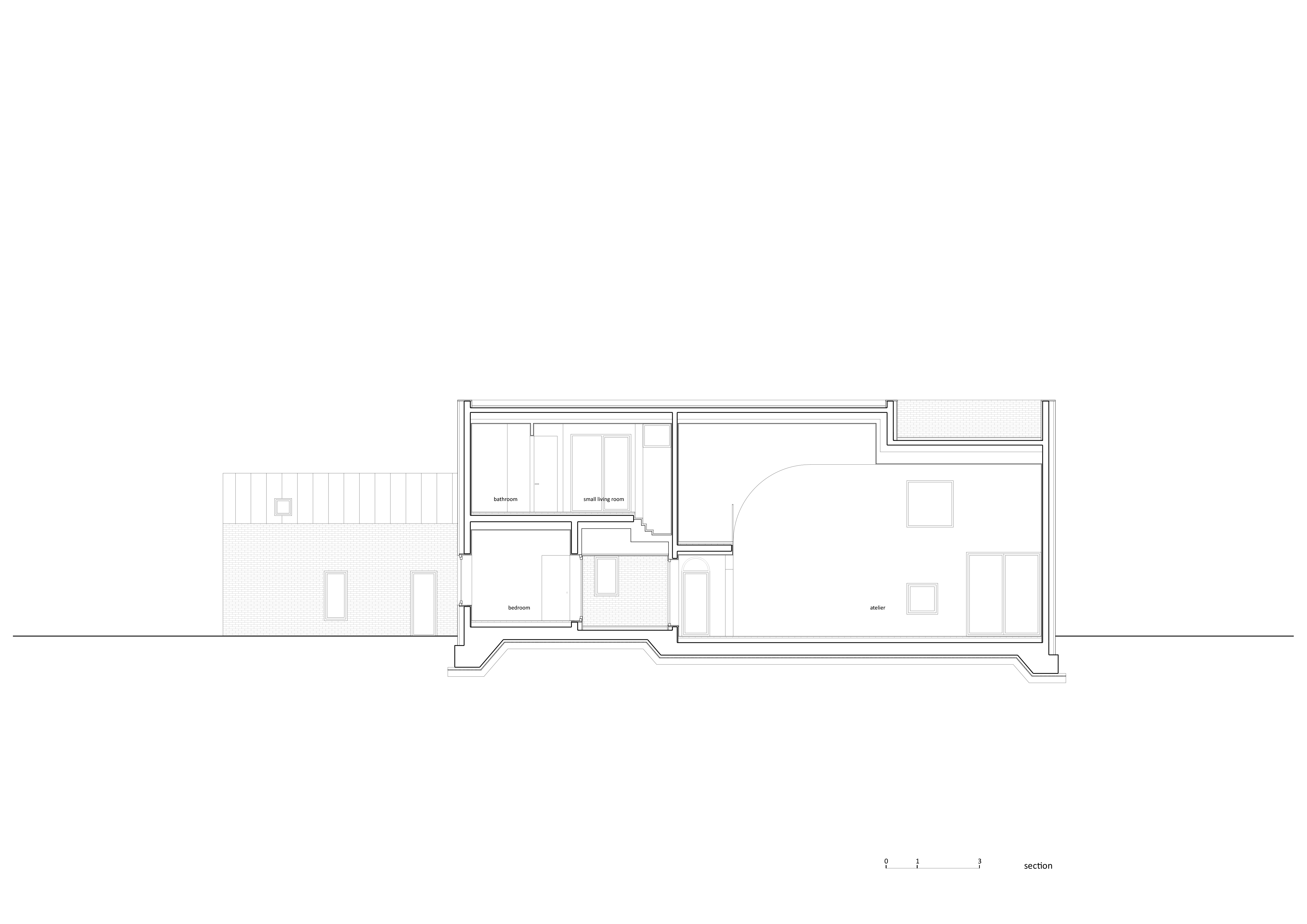
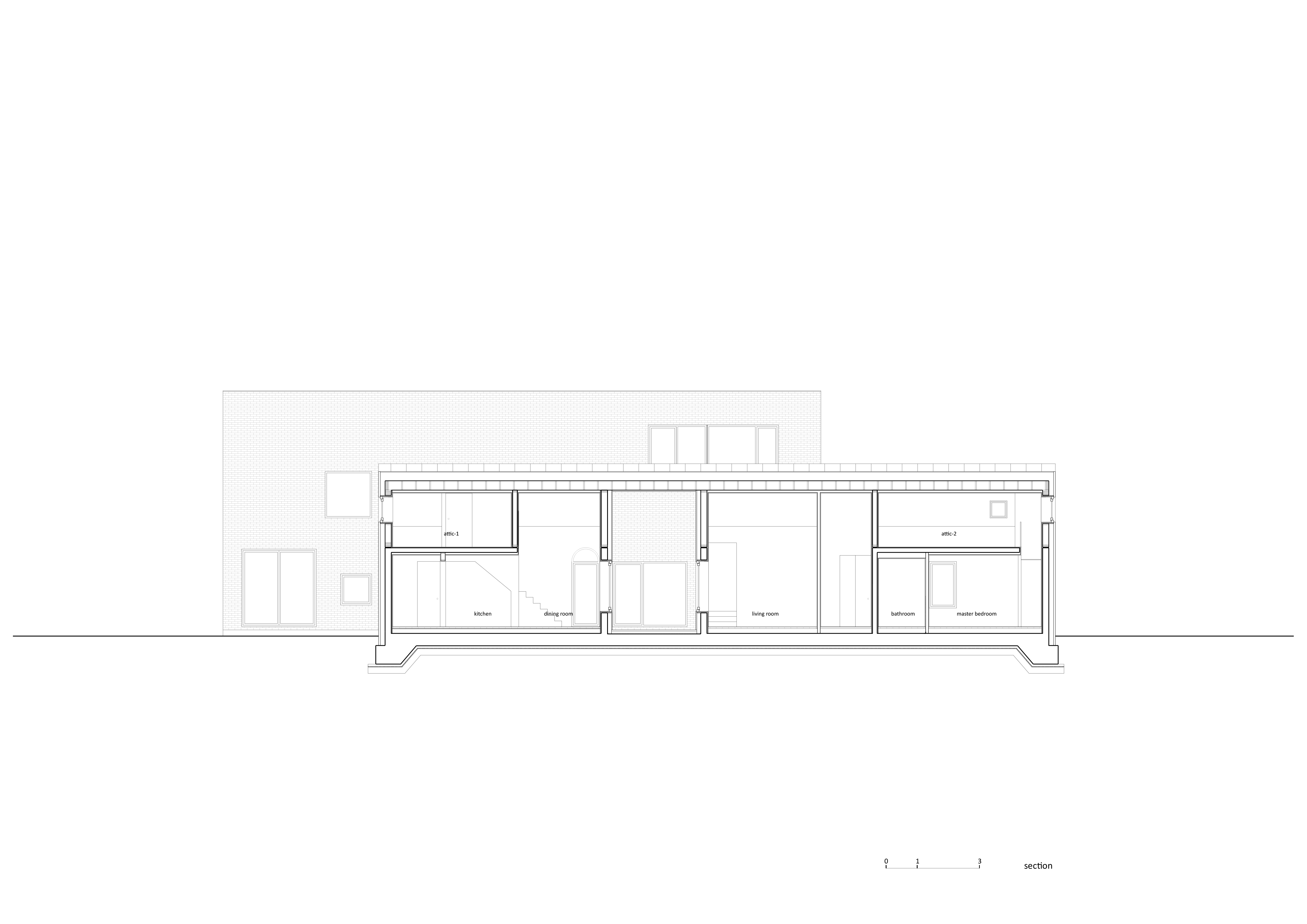

백화원은 형태가 다른 두 동이 나란히 붙어있는 구성이다. 높은 층고의 작업실이 있는 직육면체 동을 뒤편에 생활 공간인 박공 지붕 동을 앞 편에 배치했다. 두 개의 동을 엇갈린 형태로 배치하여 각각의 출입구를 만들었다. 생활 공간의 평면 구성은 부엌, 거실, 침실이 나란히 있었던 일자형 한옥에서의 삶을 바탕으로 했다. 거실과 식사공간 사이, 천창이 있는 박공 지붕 아래에 작은 마당을 두었다.
가족 구성원들에게 철저하게 독립된 공간과 자연스럽게 모일 수 있는 공간을 동시에 제공할 수 있도록 계획했다. 작가의 침실은 직육면체 동 끝 북쪽에 배치했고, 외부 데크를 통해 바로 작업실과 연결된다. 작업실의 다른 문을 열면 바로 식사를 하는 곳이 나온다. 작가의 어머니를 위한 다도실은 부엌 위 다락에 있고, 침실 위 다락에 있는 아버지를 위한 서재는 벽장 문을 열면 갈 수 있다. 모두가 사용하는 서재를 집의 중앙에 배치했고, 복도, 거실에 열려 있으며, 작은 마당을 바라볼 수 있다.
가족 구성원들에게 철저하게 독립된 공간과 자연스럽게 모일 수 있는 공간을 동시에 제공할 수 있도록 계획했다. 작가의 침실은 직육면체 동 끝 북쪽에 배치했고, 외부 데크를 통해 바로 작업실과 연결된다. 작업실의 다른 문을 열면 바로 식사를 하는 곳이 나온다. 작가의 어머니를 위한 다도실은 부엌 위 다락에 있고, 침실 위 다락에 있는 아버지를 위한 서재는 벽장 문을 열면 갈 수 있다. 모두가 사용하는 서재를 집의 중앙에 배치했고, 복도, 거실에 열려 있으며, 작은 마당을 바라볼 수 있다.
The house consists of two volumes that are connected lengthways. The rectangular volume that includes the high-ceilinged atelier is positioned to the back, while the gable-roofed volume, where the living space lies, is attached on the front. By making a staggered arrangement of two masses, separate entrances could be made. The floor plan of the linear type Hanok, with the kitchen, living room and bedroom assembled in a straight line, was the backbone on organizing the gable-roofed volume. The small courtyard under the gable roof with a roof-light is placed in-between the living room and the dining room.
The design was focused on a strict separation of the individual space, but also on connecting naturally the family members in a common area. The artist’s bedroom is placed on the northern part of the rectangular mass and has a short route through the outdoor passage towards her atelier. Another door from the atelier leads to the dining room. The tea-room for the mother is in the attic on top of the kitchen, while the secret reading room for the father is on the opposite side of the attic accessible through the closet door of the bedroom. The study room for everyone is placed in the middle of the house, opening to the hallway, the living room and looks over to the small courtyard.
The design was focused on a strict separation of the individual space, but also on connecting naturally the family members in a common area. The artist’s bedroom is placed on the northern part of the rectangular mass and has a short route through the outdoor passage towards her atelier. Another door from the atelier leads to the dining room. The tea-room for the mother is in the attic on top of the kitchen, while the secret reading room for the father is on the opposite side of the attic accessible through the closet door of the bedroom. The study room for everyone is placed in the middle of the house, opening to the hallway, the living room and looks over to the small courtyard.
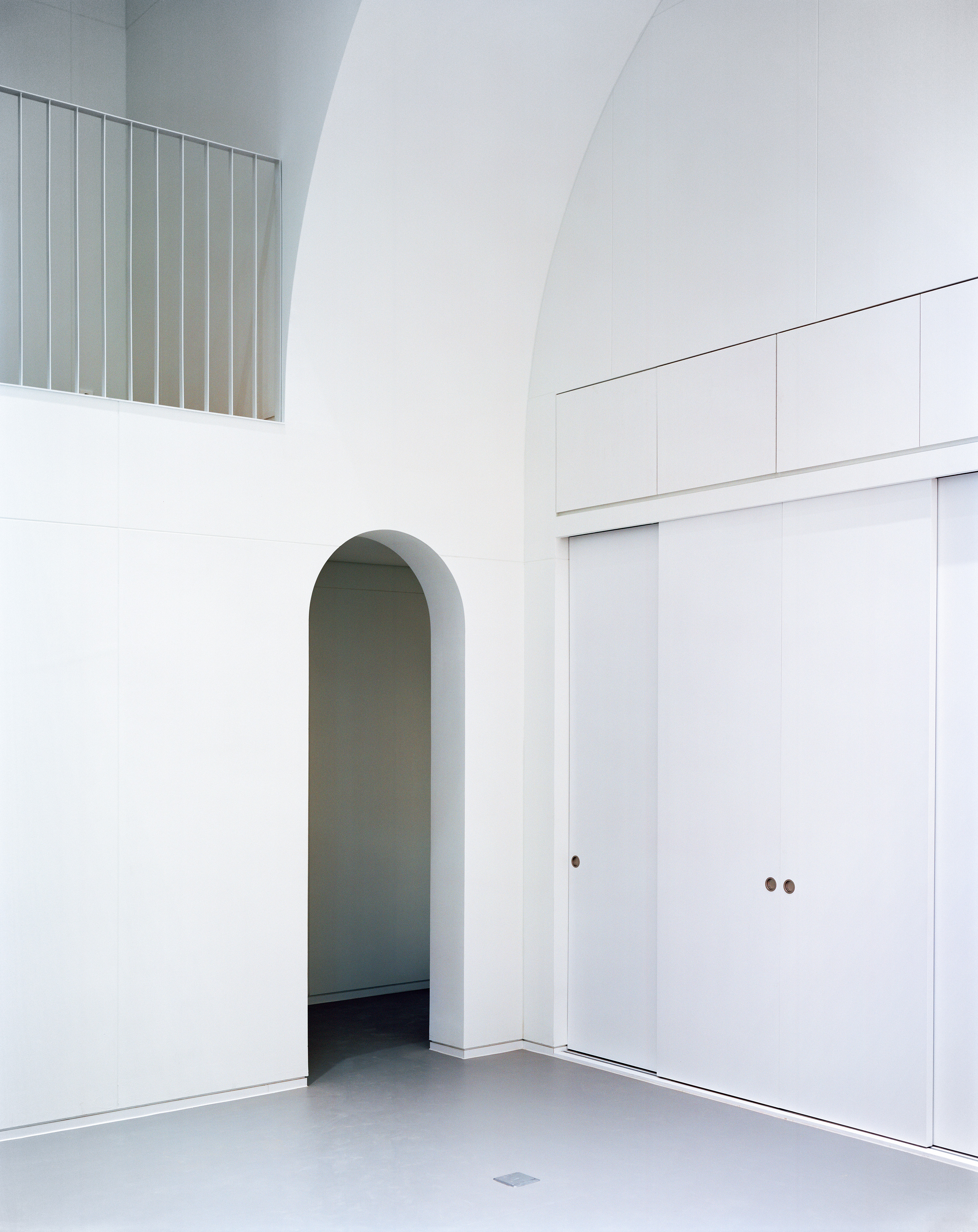
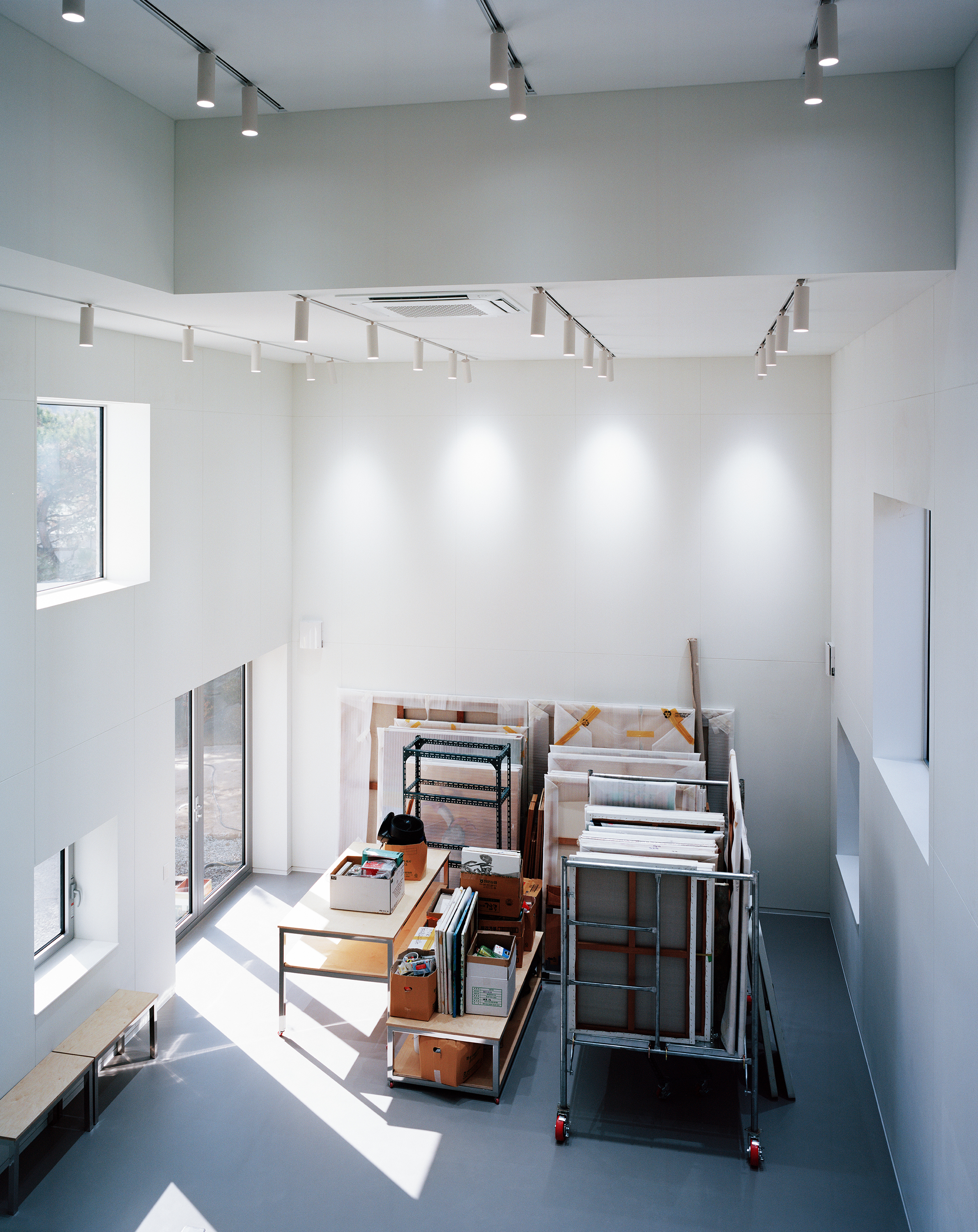

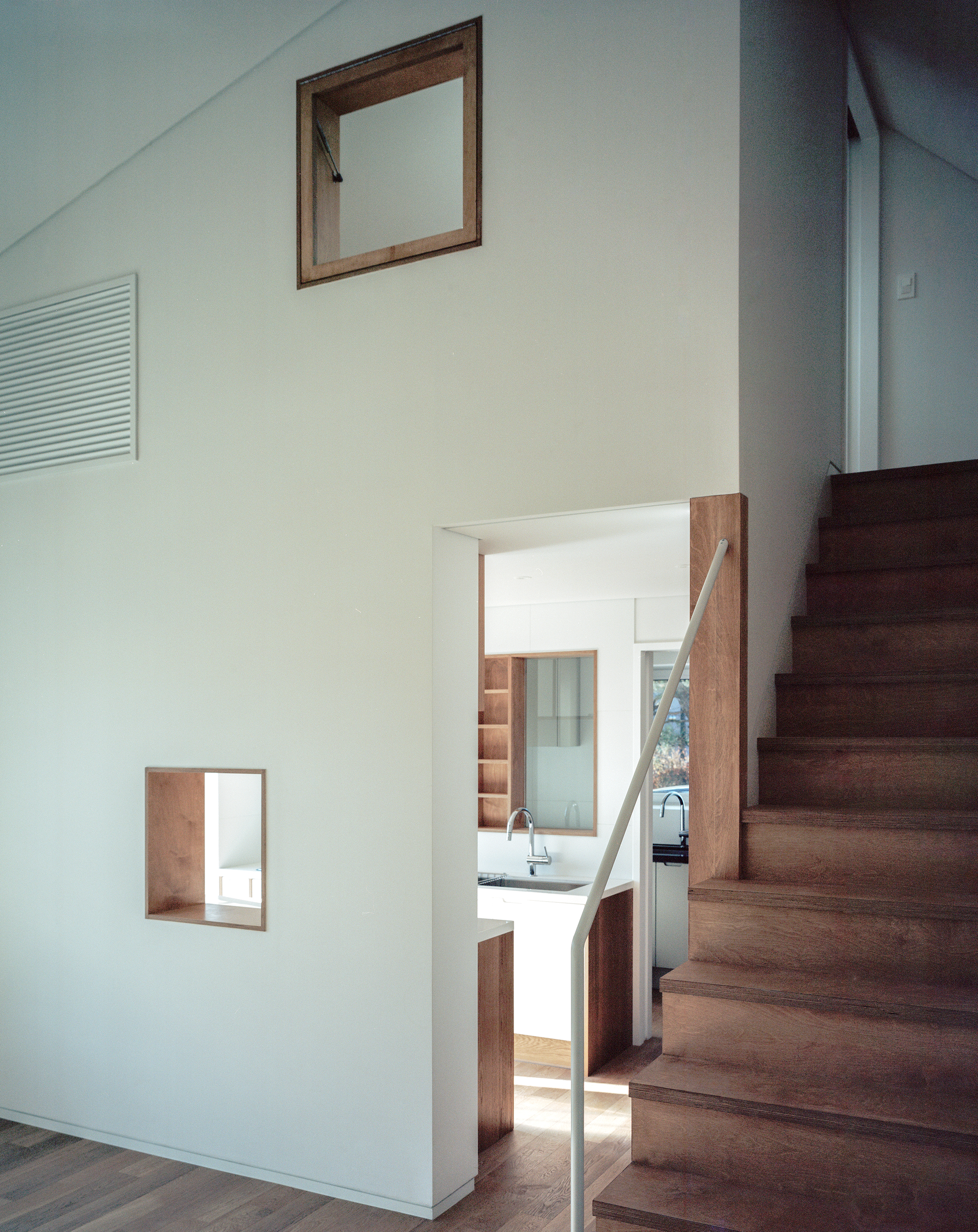
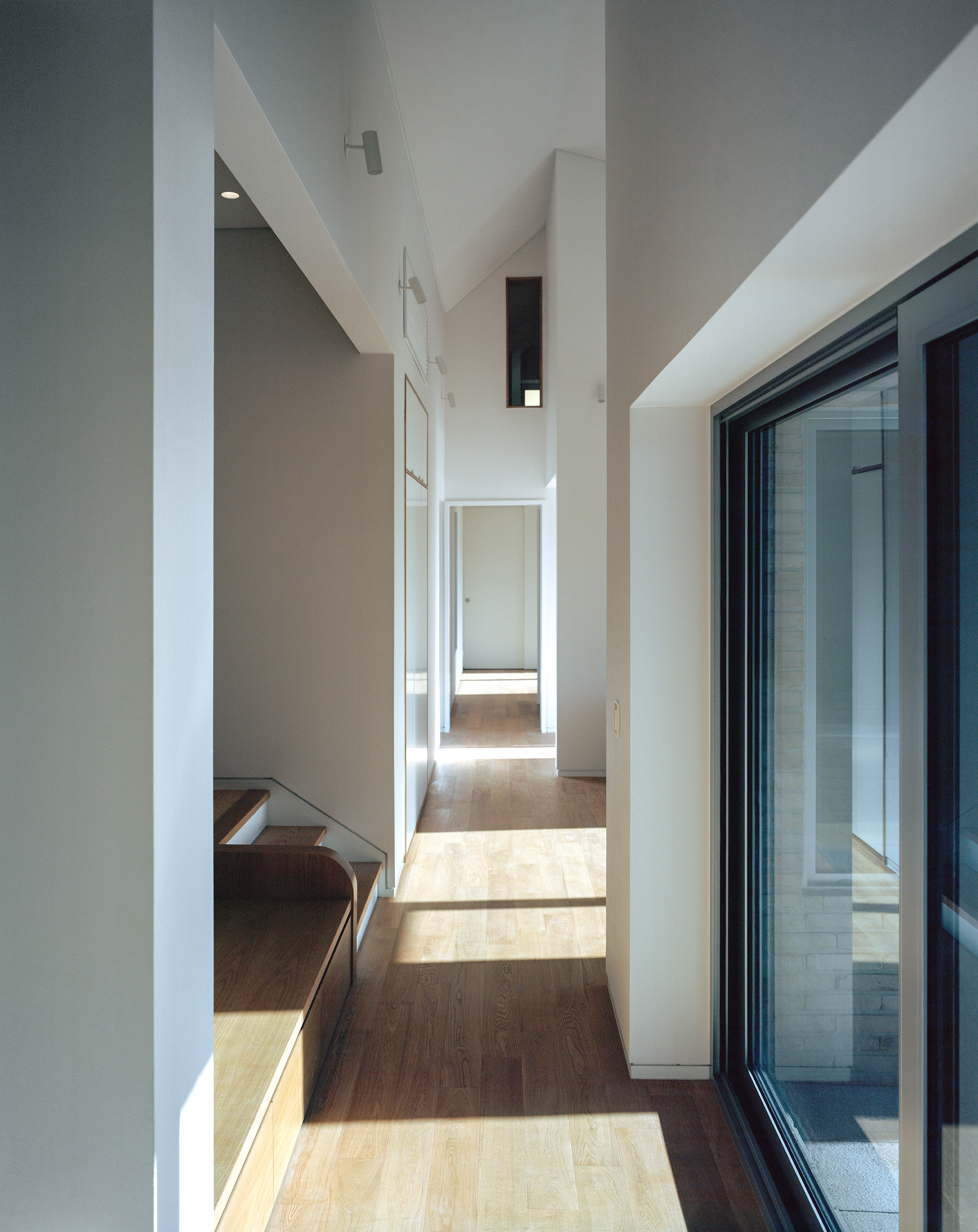
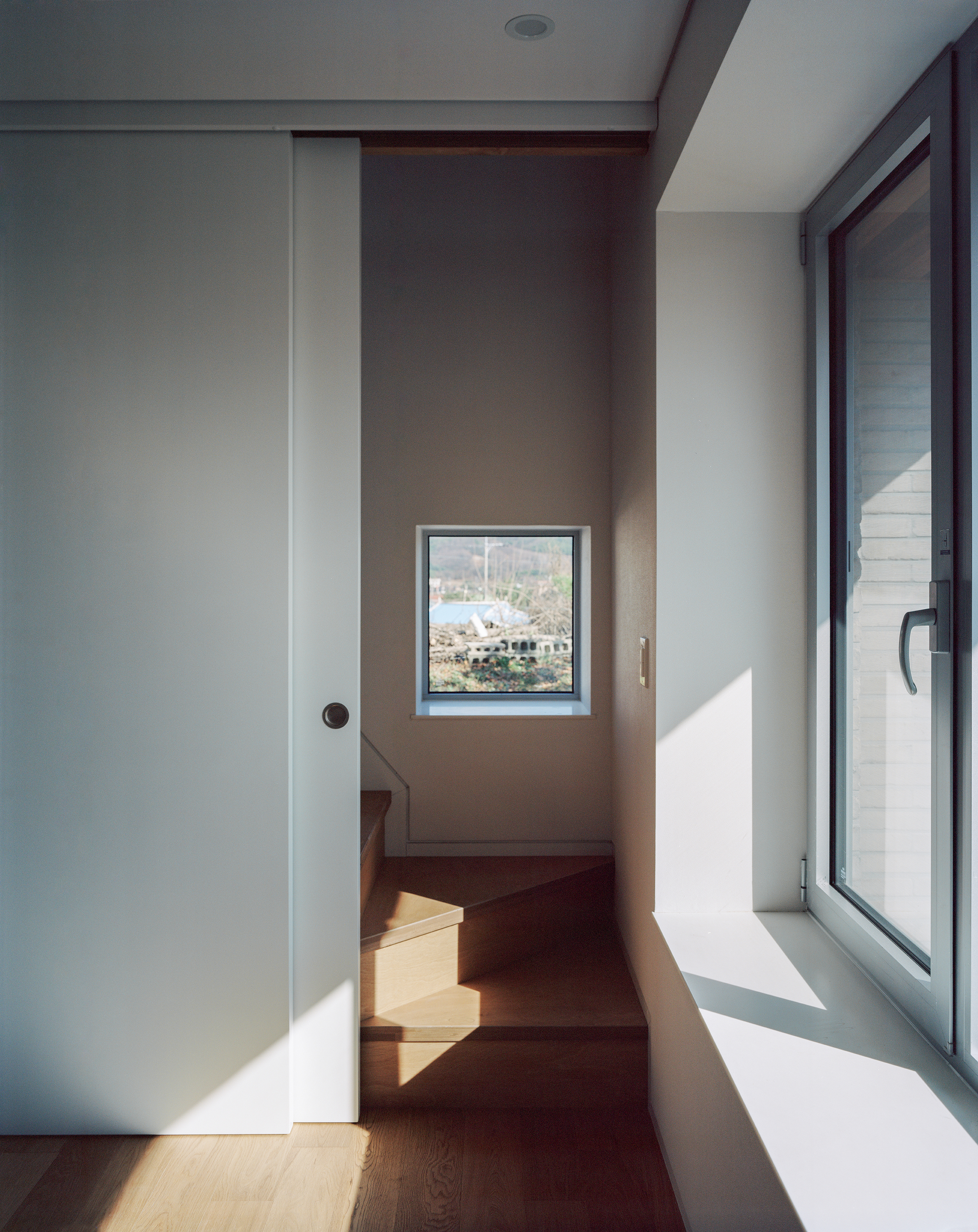
독특한 수직 동선 계획을 통해 흥미로운 장면과 형태를 구현하고자 했다. 북쪽을 향해 난 주 계단은 마당에서 바로 연결되며, 올라가면 바로 이층의 작은 거실에 도달한다. 작은 거실 앞 베란다, 동쪽을 향해 난 야외 계단을 통하여 옥상에 다다르면, 집 주변의 전경을 감상할 수 있다. 이 뒤틀린 동선 덕분에 옥상 계단 하부, 작업실 천장면을 아치로 형태를 만들 수 있었다.
높은 층고의 작업실을 구축하기 위해 철근 콘크리트로 구조를 선택했고, 박공지붕만 경량목구조로 만들어 시공비를 절감할 수 있었다. 외부 마감으로는 백색의 고벽돌을 세로 줄눈은 생략한 체, 가로 줄눈으로만 시공하여 두 개의 매스가 중첩된 형상이 더욱 간결해 보일 수 있게 했다.
높은 층고의 작업실을 구축하기 위해 철근 콘크리트로 구조를 선택했고, 박공지붕만 경량목구조로 만들어 시공비를 절감할 수 있었다. 외부 마감으로는 백색의 고벽돌을 세로 줄눈은 생략한 체, 가로 줄눈으로만 시공하여 두 개의 매스가 중첩된 형상이 더욱 간결해 보일 수 있게 했다.
A unique vertical circulation has created the design’s interesting scenes and forms. The main staircase leading north can be reached directly from the courtyard, allowing easy access to the second living room upstairs. Through the small balcony in front of this living room, an outdoor staircase goes east, leading to the roof terrace that provides a complete view of the surroundings. This twisted circulation has made it possible to create an arch on the corner of the atelier ceiling, right underneath the roof staircase.
It was necessary to construct with reinforced concrete to realize the high-ceilinged atelier. Only the gable roof was constructed with lightweight timber construction, which helped to reduce the budget. The light-colored used brick was chosen for the cladding of the façade, and the bricks are layered only with the horizontal joint highlighting the concise look of the two connected volumes.
It was necessary to construct with reinforced concrete to realize the high-ceilinged atelier. Only the gable roof was constructed with lightweight timber construction, which helped to reduce the budget. The light-colored used brick was chosen for the cladding of the façade, and the bricks are layered only with the horizontal joint highlighting the concise look of the two connected volumes.
